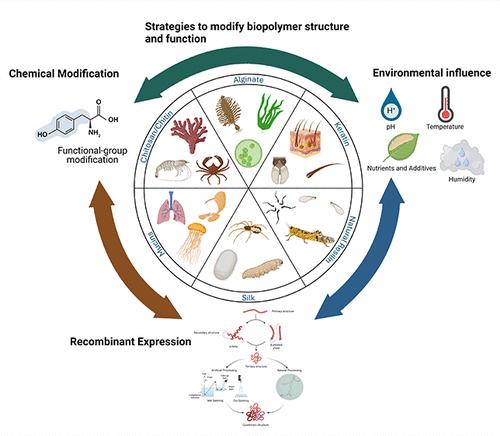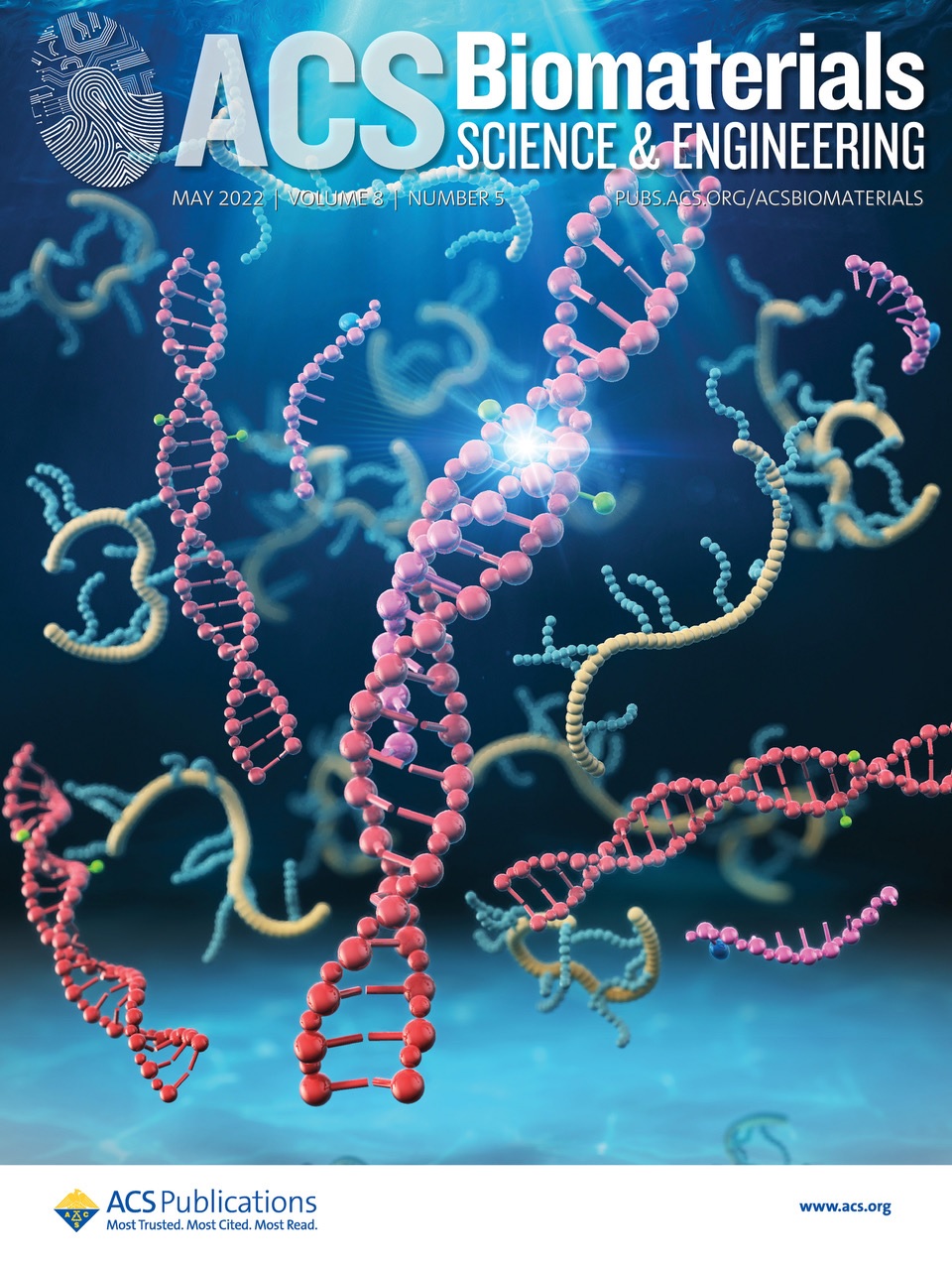Modifying Naturally Occurring, Nonmammalian-Sourced Biopolymers for Biomedical Applications
IF 5.4
2区 医学
Q2 MATERIALS SCIENCE, BIOMATERIALS
引用次数: 0
Abstract
Natural biopolymers have a rich history, with many uses across the fields of healthcare and medicine, including formulations for wound dressings, surgical implants, tissue culture substrates, and drug delivery vehicles. Yet, synthetic-based materials have been more successful in translation due to precise control and regulation achievable during manufacturing. However, there is a renewed interest in natural biopolymers, which offer a diverse landscape of architecture, sustainable sourcing, functional groups, and properties that synthetic counterparts cannot fully replicate as processing and sourcing of these materials has improved. Proteins and polysaccharides derived from various sources (crustaceans, plants, insects, etc.) are highlighted in this review. We discuss the common types of polysaccharide and protein biopolymers used in healthcare and medicine, highlighting methods and strategies to alter structures and intra- and interchain interactions to engineer specific functions, products, or materials. We focus on biopolymers obtained from natural, nonmammalian sources, including silk fibroins, alginates, chitosans, chitins, mucins, keratins, and resilins, while discussing strategies to improve upon their innate properties and sourcing standardization to expand their clinical uses and relevance. Emphasis will be placed on methods that preserve the structural integrity and native biological functions of the biopolymers and their makers. We will conclude by discussing the untapped potential of new technologies to manipulate native biopolymers while controlling their secondary and tertiary structures, offering a perspective on advancing biopolymer utility in novel applications within biomedical engineering, advanced manufacturing, and tissue engineering.

为生物医学应用改性天然存在的非哺乳动物来源生物聚合物
天然生物聚合物历史悠久,在医疗保健和医药领域有着广泛的用途,包括伤口敷料配方、外科植入物、组织培养基质和药物输送载体。然而,由于在制造过程中可以实现精确的控制和调节,合成基材料在转化方面更为成功。然而,随着天然生物聚合物加工和来源的改善,人们对这些材料重新产生了兴趣,因为天然生物聚合物具有多样化的结构、可持续来源、功能基团和特性,是合成材料无法完全复制的。本综述重点介绍了从各种来源(甲壳类动物、植物、昆虫等)提取的蛋白质和多糖。我们讨论了用于医疗保健和医药领域的多糖和蛋白质生物聚合物的常见类型,重点介绍了改变结构以及链内和链间相互作用以设计特定功能、产品或材料的方法和策略。我们将重点关注从天然、非哺乳动物来源获得的生物聚合物,包括丝纤维素、藻酸盐、壳聚糖、甲壳素、粘蛋白、角蛋白和树脂蛋白,同时讨论改进其固有特性和标准化来源的策略,以扩大其临床用途和相关性。重点将放在保持生物聚合物及其制造者的结构完整性和原生生物功能的方法上。最后,我们将讨论操纵本地生物聚合物的新技术尚未开发的潜力,同时控制其二级和三级结构,为推动生物聚合物在生物医学工程、先进制造和组织工程领域的新型应用提供一个视角。
本文章由计算机程序翻译,如有差异,请以英文原文为准。
求助全文
约1分钟内获得全文
求助全文
来源期刊

ACS Biomaterials Science & Engineering
Materials Science-Biomaterials
CiteScore
10.30
自引率
3.40%
发文量
413
期刊介绍:
ACS Biomaterials Science & Engineering is the leading journal in the field of biomaterials, serving as an international forum for publishing cutting-edge research and innovative ideas on a broad range of topics:
Applications and Health – implantable tissues and devices, prosthesis, health risks, toxicology
Bio-interactions and Bio-compatibility – material-biology interactions, chemical/morphological/structural communication, mechanobiology, signaling and biological responses, immuno-engineering, calcification, coatings, corrosion and degradation of biomaterials and devices, biophysical regulation of cell functions
Characterization, Synthesis, and Modification – new biomaterials, bioinspired and biomimetic approaches to biomaterials, exploiting structural hierarchy and architectural control, combinatorial strategies for biomaterials discovery, genetic biomaterials design, synthetic biology, new composite systems, bionics, polymer synthesis
Controlled Release and Delivery Systems – biomaterial-based drug and gene delivery, bio-responsive delivery of regulatory molecules, pharmaceutical engineering
Healthcare Advances – clinical translation, regulatory issues, patient safety, emerging trends
Imaging and Diagnostics – imaging agents and probes, theranostics, biosensors, monitoring
Manufacturing and Technology – 3D printing, inks, organ-on-a-chip, bioreactor/perfusion systems, microdevices, BioMEMS, optics and electronics interfaces with biomaterials, systems integration
Modeling and Informatics Tools – scaling methods to guide biomaterial design, predictive algorithms for structure-function, biomechanics, integrating bioinformatics with biomaterials discovery, metabolomics in the context of biomaterials
Tissue Engineering and Regenerative Medicine – basic and applied studies, cell therapies, scaffolds, vascularization, bioartificial organs, transplantation and functionality, cellular agriculture
 求助内容:
求助内容: 应助结果提醒方式:
应助结果提醒方式:


